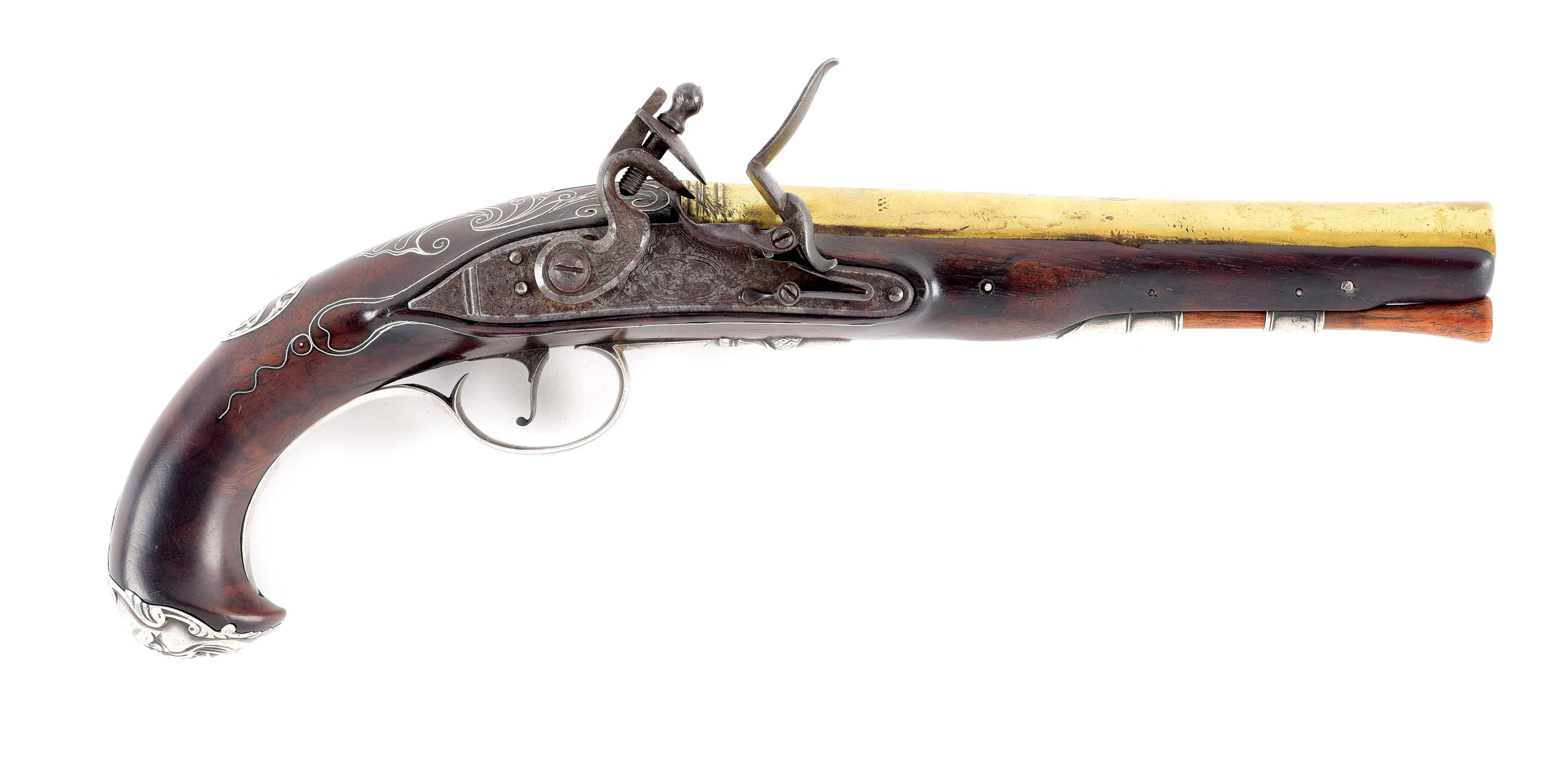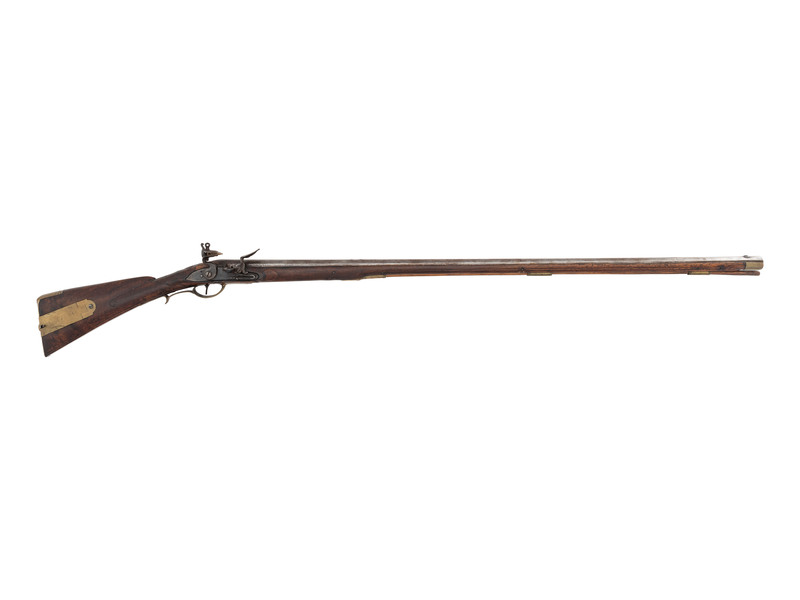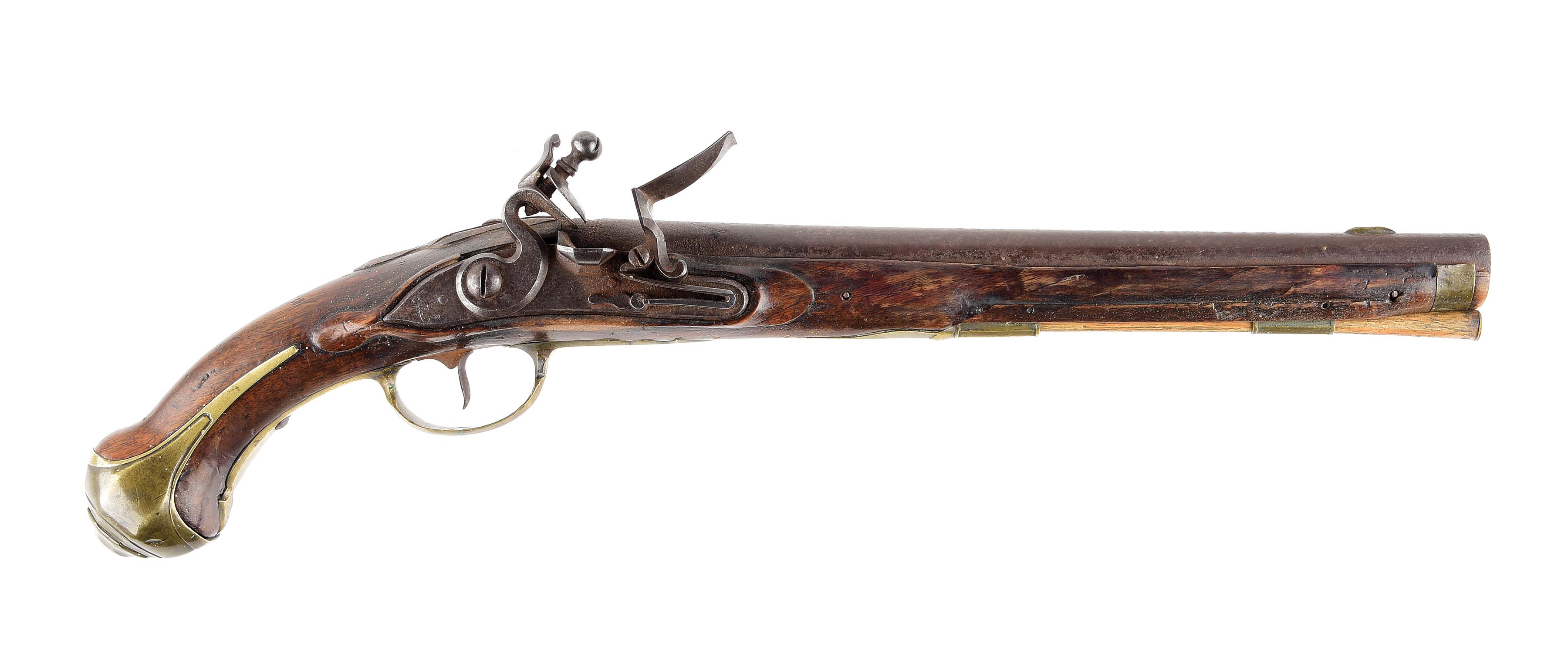4.5" length brass gorget with eagle clutching an olive branch and thirteen stars above. Underside of gorget marked in script Major General Nathaniel Goodwin. 6" brass gorget with light engraving on both ends. Pair of steel spurs measures 3.25". General Nathaniel Goodwin (1748-1819) was a Massachusetts Colonial militia officer who answered the call and witnessed the start of the Revolutionary War at Boston and Cambridge serving as Major in Colonel Gerrish’s Regiment of Militia. Like most colonial militia units it was subject to frequent reorganization, consolidation, and numerical changes. Gerrish’s Regiment was raised in April 1775 and organized at Cambridge with ten companies. It joined the main Continental Army in June assigned to General Heath’s Brigade. It was redesignated the 26th Continental Regiment in the army reorganization of January 1776 and reduced to eight companies, assigned General Clinton’s Brigade of the main army. The militiamen guarded British prisoners taken at Saratoga after the defeat of Burgoyne and later in 1778 it participated in the expedition to Rhode Island. The regiment underwent several other reorganizations becoming the 9th Massachusetts Regiment in August 1779. As the 9th Massachusetts it saw active campaigning in the Mohawk Valley, the defense of Philadelphia, and the Philadelphia-Monmouth Campaign serving until January 1783 when it was disbanded at West Point, New York. At some point Goodwin was promoted to Brigadier General, and later to major General of Massachusetts Militia, which office he retained until his death in 1819. According to a booked by Bradford Kingman titled Epitaphs from Burial Hill (1892), “For many years he represented the town of Plymouth in the General Court, and was also a magistrate, having the qualities of an impartial judge. In all duties to which he was called he was assiduous and capable, and was held in the highest esteem for probity, integrity and other virtues." Nathaniel Goodwin was married twice and had seven children before his death at age 70 on March 8, 1819. He is buried in the family plot (D 70) in Burial Hill, Plymouth, Massachusetts. Photographs of his tombstone can be found online at Find A Grave. A gorget was an insignia of rank generally worn by field officers and it is rare to find such an artifact associated with a Colonial soldier of such rank and prominence. Provenance: From the Estate of Kenneth Erwin, Portland, Michigan Condition: Gorgets are very good - larger gorget with solder repair marks.
4.5" length brass gorget with eagle clutching an olive branch and thirteen stars above. Underside of gorget marked in script Major General Nathaniel Goodwin. 6" brass gorget with light engraving on both ends. Pair of steel spurs measures 3.25". General Nathaniel Goodwin (1748-1819) was a Massachusetts Colonial militia officer who answered the call and witnessed the start of the Revolutionary War at Boston and Cambridge serving as Major in Colonel Gerrish’s Regiment of Militia. Like most colonial militia units it was subject to frequent reorganization, consolidation, and numerical changes. Gerrish’s Regiment was raised in April 1775 and organized at Cambridge with ten companies. It joined the main Continental Army in June assigned to General Heath’s Brigade. It was redesignated the 26th Continental Regiment in the army reorganization of January 1776 and reduced to eight companies, assigned General Clinton’s Brigade of the main army. The militiamen guarded British prisoners taken at Saratoga after the defeat of Burgoyne and later in 1778 it participated in the expedition to Rhode Island. The regiment underwent several other reorganizations becoming the 9th Massachusetts Regiment in August 1779. As the 9th Massachusetts it saw active campaigning in the Mohawk Valley, the defense of Philadelphia, and the Philadelphia-Monmouth Campaign serving until January 1783 when it was disbanded at West Point, New York. At some point Goodwin was promoted to Brigadier General, and later to major General of Massachusetts Militia, which office he retained until his death in 1819. According to a booked by Bradford Kingman titled Epitaphs from Burial Hill (1892), “For many years he represented the town of Plymouth in the General Court, and was also a magistrate, having the qualities of an impartial judge. In all duties to which he was called he was assiduous and capable, and was held in the highest esteem for probity, integrity and other virtues." Nathaniel Goodwin was married twice and had seven children before his death at age 70 on March 8, 1819. He is buried in the family plot (D 70) in Burial Hill, Plymouth, Massachusetts. Photographs of his tombstone can be found online at Find A Grave. A gorget was an insignia of rank generally worn by field officers and it is rare to find such an artifact associated with a Colonial soldier of such rank and prominence. Provenance: From the Estate of Kenneth Erwin, Portland, Michigan Condition: Gorgets are very good - larger gorget with solder repair marks.














Testen Sie LotSearch und seine Premium-Features 7 Tage - ohne Kosten!
Lassen Sie sich automatisch über neue Objekte in kommenden Auktionen benachrichtigen.
Suchauftrag anlegen